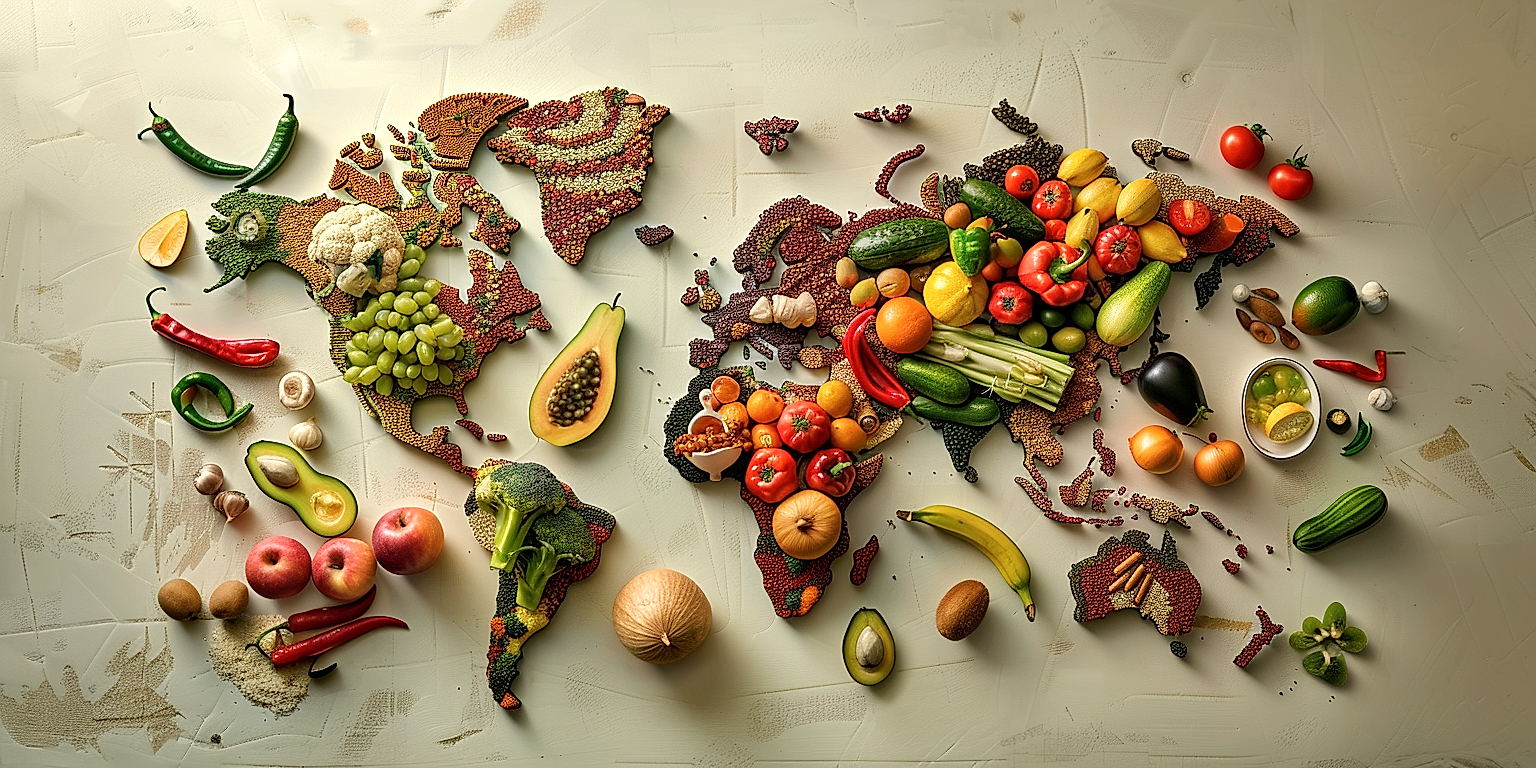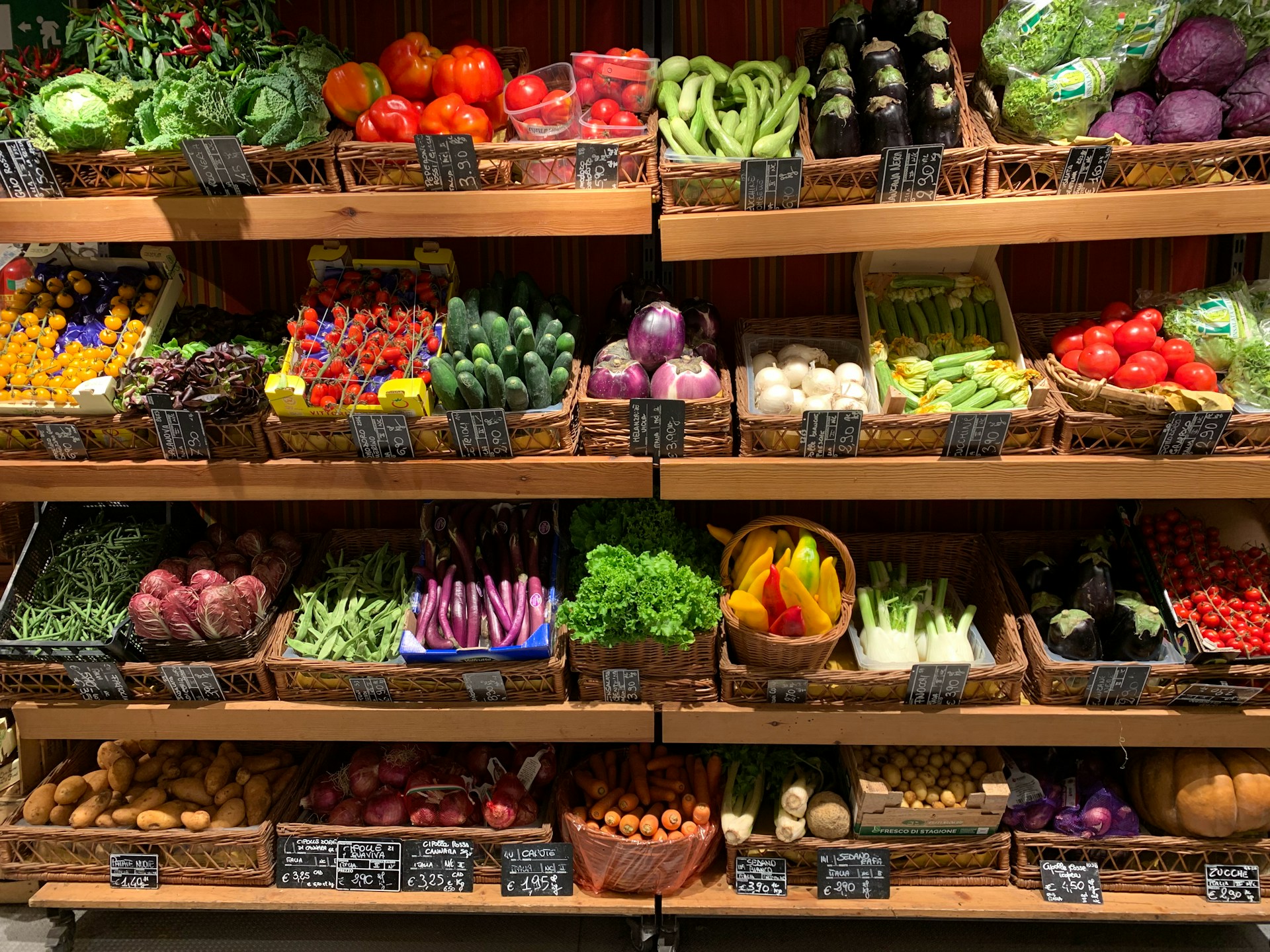In today’s ever-evolving market landscape, understanding consumer behavior has never been more critical to businesses.
As the interest and demand for processed produce continue to grow, key market trends have begun to emerge.
These trends, dictated by changing consumer preferences, are shaping the future of the industry.
From health-conscious decisions to convenience-based purchases, consumer patterns are offering insightful trajectories for the processed produce markets.
To stay competitive, businesses must adapt, innovate, and take into consideration these evolving trends.
This article delves into these key consumer trends, providing a comprehensive overview of their influence on the processed produce markets.
Contents
- Consumer Trends Driving Processed Produce Markets
- 1. Increasing demand for convenient, ready-to-eat food options
- 2. Growing health-consciousness and awareness about nutrition.
- 3. Trending toward plant-based and vegan diets
- 4. Preference for Locally-Sourced, Sustainable Produce
- 5. Rising Interest in Exotic, Global Flavors
- 6. Desire for Transparency about Food Sourcing and Production.
- 7. Growing popularity of meal kits and home cooking.
- The Bottom Line
Consumer Trends Driving Processed Produce Markets
1. Increasing demand for convenient, ready-to-eat food options
In today’s fast-paced society, an increasing number of people are relying on convenient, ready-to-eat food options.
The time constraints and busy lifestyles of many individuals have propelled the demand for processed produce, ranging from pre-cut fruits and vegetables, to ready-made salads and meal kits.
This surge in demand not only comes from individuals but also from businesses such as restaurants and cafes who aim to offer premium, convenient food options to their customers.
Processing produce for ready-to-eat consumption not only saves time and reduces effort for the consumer, but it also ensures consistency in quality and taste.
Moreover, advanced packaging techniques help to maintain the freshness of the produce for a longer period, further adding to the convenience of these products.
Given the increasing demand, manufacturers are continuously experimenting with new and innovative ready-to-eat processed produce offerings to attract consumers.
For instance, gourmet ready-to-eat meals featuring unique flavours, organic fruits and vegetables, and gluten-free options are all part of the current market trends.
The evolution and growth in the frozen food industry is another reflection of this trend.
Frozen produce, such as chopped and bagged vegetables and fruits, provide the convenience of ready-to-eat options along with the added benefit of a longer shelf life.
Furthermore, the rise of online grocery shopping and home delivery services has also reinforced this trend, making it easier for consumers to access ready-to-eat food options.
Increased marketing efforts focusing on the time-saving convenience and nutritional benefits of these products have also bolstered consumer confidence in ready-to-eat food options.
While pre-packaged salads and microwaveable meals have long been staples in the processed food market, we are now seeing more diverse and innovative offerings such as smoothie kits, pre-cut veggies for stir frying, and ready-made vegetable noodles.
This trend is being driven not just by convenience but also by changes in lifestyle and dietary preferences that lean towards healthier food options.
Increasing consumer awareness regarding manufacturing processes, sourcing and nutritional values is also playing a crucial role in influencing their preference for certain ready-to-eat food options over others.
Therefore, the trend of increasing demand for convenient, ready-to-eat food options is likely to continue and evolve even further in the foreseeable future due to a combination of changing market dynamics, evolving consumer preferences and advances in technology.
2. Growing health-consciousness and awareness about nutrition.
As global trends shift towards a more health-conscious society, the effects can be seen greatly observed in the processed produce markets.
Consumers are increasingly seeking out foodstuffs that align with their ideals of health and nutrition, putting heavy influence on their purchasing decisions.
The importance of good nutritional content and health benefits of foodstuffs is being viewed as a priority among a vast range of consumers, regardless of their demographic.
Notably, this pronounced uptick in health-consciousness has resulted in a higher demand for processed fruits and vegetables which provide the necessary vitamins and minerals.
This has required producers of processed produce to shift their focus to meet this healthy demand, utilizing innovative processing methods to retain maximum nutritional content.
As consumers become more informed about the significance of a well-balanced diet, they tend to gravitate towards processed produce.
The preference is largely due to the accessibility, convenience, and inherent nutritional value these products provide.
However, this health-conscious consumer behaviour does not just end at nutritional content; it also extends to the whole lifecycle of the produce, from farm to table.
There is now a growing demand for produce which is sustainably grown and processed, with minimum use of harmful chemicals thus nurturing organic and pesticide-free farming practices.
The increased awareness about nutritional food choices has also promoted the trend of voluntary nutritional labelling on processed produce.
Manufacturers are now inclined to communicate the nutritional composition of their processed produce in a clear, concise, and easy-to-understand format.
This transparency not only builds trust between the consumer and the producer, but also makes it easier for the consumer to make informed purchase decisions.
The dairy, meat-based, and confectionery sectors of processed produce have also taken note of this trend, incorporating more health-conscious alternatives into their product lines.
For instance, low-fat, low-sugar, gluten-free and high-protein options are now regular offerings in these sectors.
Furthermore, there is a growing market for processed produce fortified with added vitamins and minerals, offering an extra health boost to the consumer.
Overall, consumers’ increasing health-consciousness and awareness about nutrition is having a pronounced impact on the processed produce market, driving manufacturers to adapt and innovate in response to these trends.
3. Trending toward plant-based and vegan diets
The trend of plant-based and vegan diets is significantly affecting the processed produce markets.
Increased awareness about animal welfare and environmental sustainability, along with the recognized health benefits, have contributed to this trend.
These diets mainly consist of fruits, vegetables, nuts, seeds, and whole grains, which have led to greater demand for these products in the market.
Many consumers are also preferring plant-based alternatives for dairy products and meat, increasing demand for processed produce like almond milk or meat substitutes created from processed vegetables and grains.
This shift towards plant-based and vegan diets furthers the need for innovation within the processed produce industry to meet evolving consumer tastes and dietary preferences.
Food processors are investing in research and development to create new products that cater to this growing consumer segment.
As a result, we’re seeing an influx of innovative plant-based products in the market; from vegan cheeses made from nuts to protein-packed meat substitutes derived from plants.
The necessity to cater to these dietary requirements has challenged the industry to optimize processing methods that best retain the nutritional value of these plant-based sources.
The trend is not only limited to western countries, but has been global in scope, with an increasing interest in plant-based diets noted in diverse markets.
A major influence for this shift towards plant-based and vegan diets has been the growing body of scientific research linking these diets to improved health and lower disease risk.
More people adhering to plant-based and vegan diets are also driving dining and grocery trends, influencing restaurant menus to supermarket shelves.
Processors who have been quick to adapt to this trend have seen significant growth in their market share and revenues.
Despite the misconception that a plant-based diet limits food options, a diverse range of processed plant produce is available to meet diverse flavor profiles and cooking requirements.
Overall, the trend towards plant-based and vegan diets appears to be more than a passing fad, indicating long-term implications for the processed produce industry.
The continued growth of these diets will likely spur further innovation and diversification in processed plant produce.
4. Preference for Locally-Sourced, Sustainable Produce
The contemporary consumer’s preference for locally-sourced, sustainable produce is significantly reshaping the processed produce market.
This trend is not simply a fad – it is driven by a deeper understanding and appreciation of factors such as food safety, environmental impact, and the support of local economies.
Consumers are increasingly demanding transparency from food producers and suppliers, demanding to know exactly where their food comes from and how it was grown.
These food-conscious consumers are even willing to pay premium prices for products labeled as ‘locally grown’ or ‘sustainable’.
Locally-sourced produce is seen as inherently fresher and more flavorful, which makes it more attractive to consumers who prioritize taste and quality in their food choices.
This newfound preference is driving many food manufacturers and retailers to establish partnerships with local farmers and growers.
Moreover, it also necessitates adjustments in logistics and supply chain management in order to accommodate the delivery of fresh, locally-sourced produce.
This is true especially for processed produce, which needs to balance the demand for fresh, quality ingredients with the requirements of food preservation and shelf life.
Additionally, the trend towards sustainable agriculture also comes with certain challenges such as meeting standards for organic farming or reducing carbon footprint.
But at the same time, it also presents opportunities for businesses to innovate and offer products that cater to ecologically conscious consumers.
For example, the demand for sustainable produce has led to the growth of ‘green’ technologies in farming like hydroponics and vertical farms.
Interestingly, this preference for local and sustainable food is not limited to fresh produce.
It extends to processed foods as well, with demand growing for canned, frozen, or preserved products that are made from locally-sourced ingredients.
Consumer trends show a clear desire for food products that are not only convenient and tasty but also contribute to the health of the planet and the economy of their local communities.
In order to stay relevant in the market, food producers must take note of this trend and adapt their business practices and product offerings to meet this growing demand.
5. Rising Interest in Exotic, Global Flavors
One key trend impacting the processed produce market is the increasing demand for exotic, global flavors.
This has been largely driven by the influence of social media, where people are constantly exposed to new food experiences and culinary cultures.
As consumers become more adventurous in their food choices, they are actively seeking out unique flavors and ingredients from around the globe.
This interest has been further heightened by travel shows and celebrity chefs, who showcase a plethora of global dishes and recipes.
Various fruits and vegetables, beloved in other cultures but less common in Western diets, are now finding their way into the mainstream market.
These ingredients not only add an exciting diversity of flavors, but they also often come with strong nutritional profiles, aligning with the growing health consciousness of consumers.
Specialty grocers and farmers markets have been eager to cater to this demand, stocking everything from dragon fruit and starfruit to cardoons and sun chokes – and consumers are responding with equal enthusiasm.
Additionally, the immigrant population in various countries has also contributed to this trend, as they bring their home cuisines and flavors to the new places.
This leads to a natural fusion of cuisines, where traditional dishes are given a twist with the incorporation of these new, exotic ingredients.
Consequently, this has led to a surge in demand for processed produce that captures these unique flavors.
Manufacturers are now producing a range of items, from frozen exotic fruits for smoothies to canned specialty vegetables for gourmet cooking.
Food companies are also developing new products – such as spice mixes, sauces and pastes – that incorporate these global flavors to allow consumers to replicate these dishes at home.
Innovations like these have greatly served to widen the reach of these exotic, global flavors, making them accessible to a broader consumer base.
Brands that can effectively capitalize on this trend, either through product development or strategic marketing initiatives, stand to gain a significant competitive advantage in the processed produce market.
Despite the many challenges the food industry faces, this trend represents an exciting opportunity for growth and differentiation.
6. Desire for Transparency about Food Sourcing and Production.
The recent trend in the processed produce market shows a marked increase in the desire for transparency about food sourcing and production.
More than ever, consumers are seeking to understand the entire journey of their food, from farm to table, before making a purchase decision.
This search for knowledge is not limited to the origin of the food, but extends to the methods of cultivation and production, the treatment of workers involved, and the environmental impact of the processes.
The demand for transparency stems from a growing awareness and concern for health, environment, and ethics among consumers.
There is a rising need for brands to be transparent, not only about their ingredients, but also the sustainability of their farming practices.
Consumers want to know if the farming practices respect the ecology, whether the product is organic, or if the brand is involved in any unethical or controversial practices.
As a result, processed food producers are being held to higher standards and are expected to be more responsible and accountable about their sourcing and production.
Brands that do not meet the expectations of transparency risk a diminished reputation and loss of market share.
On the other hand, brands that promote transparency tend to gain a competitive edge in the rapidly evolving processed produce market.
Transparency can also boost the brand’s credibility and consumer trust, which can be instrumental in driving sales and fostering brand loyalty.
A growing number of companies are therefore investing in technology to provide detailed information about their sourcing and production, such as traceability systems and QR codes.
These help consumers access information about the product’s path from source to store, thereby encouraging informed decision-making.
Furthermore, transparency in food sourcing and production can contribute to the ethical and sustainable development of the food industry.
Through increased transparency, brands can not only meet consumer demand but also positively influence the food industry by promoting sustainable practices and ethical sourcing.
Thus, the growing consumer demand for transparency in food sourcing and production is shaping the current and future trends of the processed produce market.
7. Growing popularity of meal kits and home cooking.
The processed produce market has experienced significant expansion, driven in part by the increasing popularity of meal kits and home cooking.
Today’s consumers are seeking more control over their food, and meal kits offer the convenience of pre-portioned, chef-curated meals made at home.
These meals are often accompanied with easy-to-follow recipes that lower the barriers to home cooking, making the process accessible even to beginners.
Moreover, meal kits eliminate the guesswork and time-consuming process of meal planning and grocery shopping, further enhancing their appeal.
With meal kits, a consumer can enjoy a home-cooked meal without having to deal with the inconveniences typically associated with home cooking.
Significantly, the use of meal kits also enables consumers to tailor their diet, portion sizes, and food preferences ultimately gaining control over their health and nutrition.
Therefore, meal kits have been successful in bridging the gap between convenience, health-consciousness, trend towards home-cooking, and the growing interest in diverse, global flavours offered in the processed produce markets.
Beyond meal kits, a general interest in home cooking has also surged in recent years.
Driven by a desire for healthier eating habits and greater control over food sourcing, people are increasingly taking the time to learn how to cook and prepare their own meals.
This shift has also been influenced by the abundance of online cooking courses and easy-access recipe platforms that have made home cooking more appealing and accessible to a wider demographic.
In response, the processed produce manufacturers are introducing a variety of pre-cut, washed, and ready-to-cook options that ease the cooking process and save time.
Such trends are bolstering the case for meal kits and home cooking, sending ripples through the processed produce market.
The rising popularity of meal kits and home cooking is ultimately driving the need for the processed produce industry to align their product offerings with consumer demands for convenient, nutritious, and personalized food options.
Thus, the processed produce market is seeing a shift towards portioned, easy-to-prepare and more globally inspired food choices that cater to this rising preference for home cooking.
Therefore, as meal kits and home cooking continue to grow in popularity, there will be a parallel expansion in the diversity of processed produce available to consumers.
Indeed, in the future we can expect to see an even broader assortment of these convenient, healthful, and easily-preparable products evolving alongside consumer tastes and preferences.
The Bottom Line
There is a clear uptake in consumer interest for practical, health-conscious and environmentally friendly food choices.
Ready-to-eat options and home-delivered meal kits are increasingly popular, showing a demand for convenience without sacrificing nutritional quality.
Further, consumers now lean more towards plant-based or vegan diets, fueled by increasing health consciousness and ethical considerations.
The preference for locally-sourced and sustainable produce indicates a growing commitment to environmental consciousness and a desire to support local economies.
Additionally, the interest in diverse global flavors reveals a taste for food exploration and culinary adventurism.
Ultimately, the landscape of food consumption is shifting due to the growing emphasis on transparency about food sourcing and production, reflecting the consumers’ quest for authenticity and integrity in their food choices.
The current food trends are, therefore, steering towards a blend of convenience, health-promoting, ethically sourced, globally influenced, and transparent food offerings.




